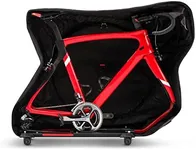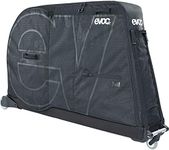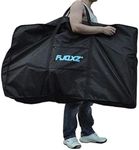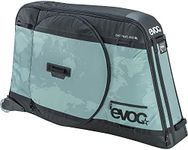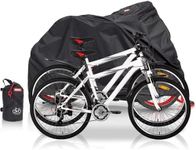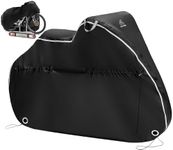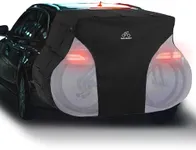Buying Guide for the Best Bike Travel Bag
Choosing the right bike travel bag is crucial for ensuring your bike's safety during transport, whether you're traveling by plane, train, or car. A good bike travel bag will protect your bike from damage, be easy to handle, and fit your specific bike model. When selecting a bike travel bag, consider the type of travel you'll be doing, the level of protection you need, and how easy it is to pack and transport. Understanding the key specifications will help you make an informed decision that suits your travel needs and bike type.Size and CompatibilitySize and compatibility refer to the dimensions of the bike travel bag and its ability to accommodate your specific bike model. This is important because a bag that is too small won't fit your bike, while one that is too large may not provide adequate protection. Bike travel bags are generally categorized by the type of bike they can accommodate, such as road bikes, mountain bikes, or triathlon bikes. To choose the right size, measure your bike's dimensions and compare them to the bag's specifications. Ensure the bag is compatible with your bike type and any additional components like disc brakes or aero bars.
Protection LevelProtection level refers to how well the bike travel bag can safeguard your bike from impacts, scratches, and other potential damage during transit. This is crucial for maintaining your bike's condition and performance. Protection levels can range from soft cases with minimal padding to hard cases with rigid shells. Soft cases are lighter and easier to store but offer less protection, while hard cases provide maximum protection but can be heavier and bulkier. Consider the mode of transport and how much handling your bike will undergo to determine the level of protection you need.
WeightThe weight of a bike travel bag is important because it affects how easy it is to carry and transport. A lighter bag is easier to handle and may help you avoid excess baggage fees when flying. Bike travel bags can vary significantly in weight, with soft cases generally being lighter than hard cases. When choosing a bag, consider your own strength and the amount of carrying you'll need to do. If you'll be moving the bag frequently or over long distances, a lighter option may be more suitable.
Ease of UseEase of use refers to how simple it is to pack and unpack your bike in the travel bag, as well as how easy it is to transport the bag itself. This is important for saving time and reducing stress during your travels. Features that contribute to ease of use include the bag's opening mechanism, the presence of wheels for rolling, and handles for carrying. Some bags also have internal straps or compartments to secure bike components. Consider how often you'll be packing and unpacking your bike and choose a bag that offers convenience and efficiency.
DurabilityDurability refers to the bike travel bag's ability to withstand wear and tear over time. A durable bag will last longer and provide better protection for your bike. Materials like high-denier nylon or reinforced plastic contribute to a bag's durability. Look for features such as reinforced stitching, robust zippers, and sturdy wheels. If you travel frequently or in challenging conditions, investing in a more durable bag will ensure it holds up over multiple trips.
